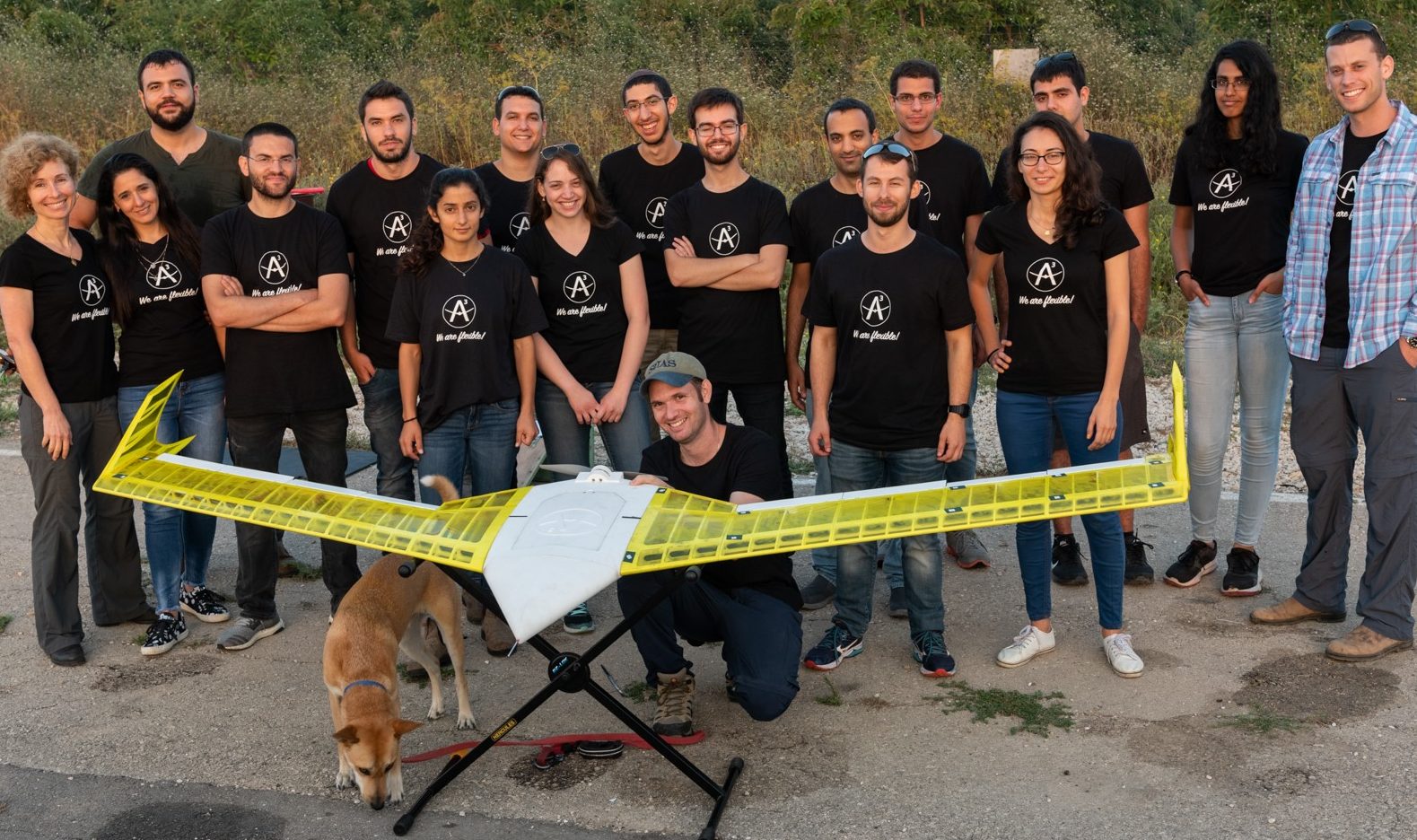Students and staff from the Technion – Israel Institute of Technology have successfully completed the first test flight of the A3TB (Active Aeroelastic Aircraft Testbed), an experimental setup used to study aircraft dynamics and wing flexibility. The unmanned aircraft is entirely 3D printed, and won the Student Project Competition during the 60th Israel Annual Conference on Aerospace Sciences in March. The test flight itself took place two months after on May 15.

Designing modern aircraft
There are many factors to be considered when designing modern aircraft, such as fuel consumption and harmful emissions. Usually, reducing the weight of the aircraft itself can bring with it a mountain of economic and environmental benefits, but it’s not always feasible to simply remove some of the components. Instead, the force of gravity can be counteracted through design choices, such as a large wingspan to reduce drag and increase lift. Long wings can however lead to bending and structural tremors, so control mechanisms need to be put in place with simulations and test flights.
The A3TB
When running test flights, the possibility of a crash is very real so the testbeds should be reproducible and fairly inexpensive. The A3TB is just that and can be produced in a very short space of time with just a 3D printer. It weighs 10kg but has a wingspan of 3m, allowing the team to evaluate its performance during flight so that control and stability mechanisms can be designed off the back of real flight data.
Prof. Daniella Raveh, a researcher leading the project, said, “The successful flight signals the starting point of an extensive program of research, testing, and design. The concept we developed, and the possibility of printing the entire aircraft on a 3D printer, offer considerable freedom in designing the airplane and an enormous cost advantage compared to airplanes made of composite materials or metals. Since it is a test airplane that is expected to crash at some point, these features make it possible to make many improvements without large investments.”
The test flight in May demonstrated that the current design is capable of flying horizontally and maneuvering at sea level. According to the team, the flight marks an important milestone in the aircraft’s development.
Prof. Raveh concludes: “The group is currently working on an automatic control mechanism that will be installed on the second generation of the aircraft, A3TB-G2, in the next few months, and we hope to report on additional interesting results in the near future.”

In recent years, we have seen additive manufacturing being employed more and more for aerospace and aviation applications. Earlier this year, BAE Systems signed a Memorandum of Understanding with UK-based Renishaw to improve manufacturing processes for combat aircraft systems. The collaboration aims to improve performance, reduce costs, and speed up aircraft system production through the use of industrial metal 3D printing. Elsewhere, aerospace company ArianeGroup announced that it has successfully tested its first entirely 3D printed combustion chamber. The chamber was fire tested a total of 14 times between May and June this year on the P8 test bench of the DLR German Aerospace Center’s Lampoldshausen testing facility.
The nominations for the 2020 3D Printing Industry Awards are now open. Who do you think should make the shortlists for this year’s show? Have your say now.
Subscribe to the 3D Printing Industry newsletter for the latest news in additive manufacturing. You can also stay connected by following us on Twitter and liking us on Facebook.
Looking for a career in additive manufacturing? Visit 3D Printing Jobs for a selection of roles in the industry.
Featured image shows Prof. Daniella Raveh with the students. Photo via Technion.


